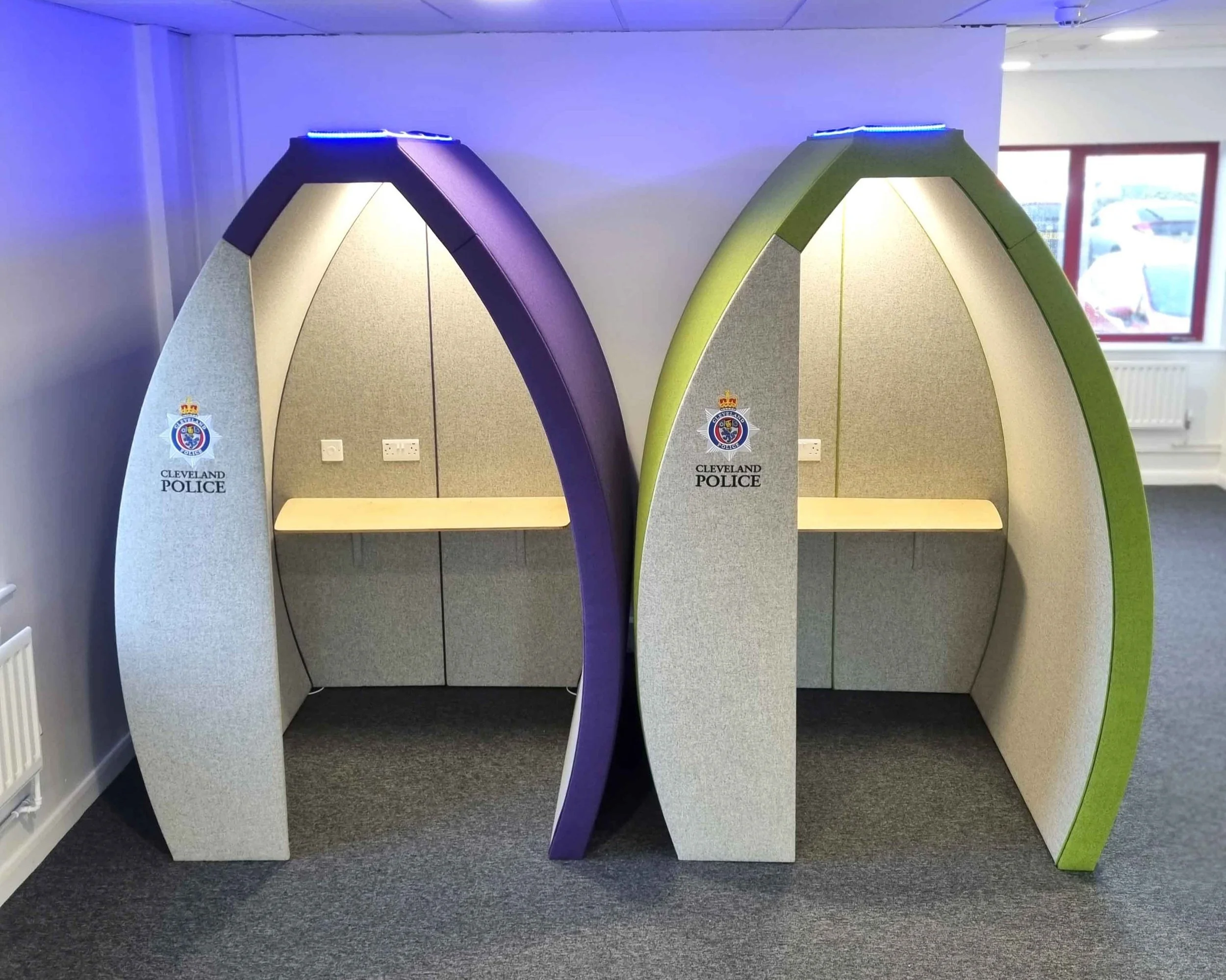Why Acoustic Furniture is So Important in Public Sector Organisation Spaces
Date 16.07.2025 Author: Stuart Jones
In today’s world of open-plan design and multi-functional spaces, public sector organisations are under increasing pressure to create environments that are not only cost-effective and efficient, but also inclusive, calm and productive. One of the most overlooked yet transformative ways to achieve this? Acoustic furniture.
From local councils and government offices to NHS facilities and educational settings, acoustic solutions are rapidly becoming essential – not a luxury. Here’s why.
Noise Is a Hidden Barrier to Productivity
Public sector spaces are often shared, busy, and multi-use. Staff might be taking calls, meeting with clients, supporting vulnerable individuals, or simply trying to concentrate. Without acoustic treatment, these spaces can become chaotic.
Acoustic furniture, such as pods, partitions and wall panels, helps reduce reverberation and background noise – leading to better focus, fewer distractions and improved wellbeing for both employees and the people they serve.
Better Experiences for Neurodiverse Users
PAS 6463:2022, the British Standard for neurodiversity and the built environment, encourages inclusive design. Many neurodiverse individuals, including those with autism or ADHD, are especially sensitive to sound. Loud or unpredictable noise can cause stress and reduce a person’s ability to interact or work effectively.
Soft, upholstered acoustic booths and sound-dampening materials support calmer, more predictable environments – crucial in spaces like job centres, council drop-in hubs or NHS waiting areas.
Supporting Accessibility
It’s not just about noise reduction – it’s about access for all. Acoustic pods and screens can provide private, wheelchair-accessible zones for phone calls, meetings or online appointments, especially useful in hybrid public services.
Designing with dignity means ensuring that everyone, regardless of ability, has a space where they feel comfortable and heard.
Flexible Solutions for Changing Needs
The public sector is constantly evolving. Spaces are often reconfigured, departments relocated, and buildings repurposed to meet shifting demands. In such a dynamic environment, freestanding, modular acoustic furniture offers a smart solution.
Unlike fixed partitions, modular acoustic screens, booths, and pods can be easily repositioned or reconfigured without the need for building works or contractors. This means open-plan areas can quickly be transformed into private focus zones, accessible meeting spaces, or quiet consultation areas — all with minimal disruption to services or staff.
Contributing to Sustainability Goals
Sustainability is a key priority across the public sector, with clear targets to reduce waste and carbon impact. Acoustic furniture can play a valuable role in meeting these goals — especially when it’s made from recycled materials like PET felt or responsibly sourced fabrics.
Well-designed acoustic solutions that are built to last, can be reupholstered, or upgraded over time help extend product lifespan and reduce the need for frequent replacement. This not only minimises environmental impact but also supports long-term value for public sector budgets.
Improving Public Service Delivery
Ultimately, the public sector exists to serve. Whether it’s a teacher speaking to a parent, a social worker meeting with a client, or a doctor discussing sensitive health information – acoustics matter. A noisy space can compromise clarity, privacy and dignity.
Acoustic furniture enhances the professionalism and effectiveness of every interaction.
One Piece, Many Purposes: The Value of Multifunctional Acoustic Furniture
In the pursuit of creating efficient and productive workplaces, it's easy to overlook how a single, well-placed piece of acoustic furniture can replace multiple traditional setups. Instead of investing in separate tables for dining, desks for focused work, and booths for meetings, organisations are increasingly turning to multifunctional acoustic pods and furniture that adapt to a range of needs throughout the day.
Imagine a pod or acoustic table placed in the heart of an office that serves as:
A quiet solo workspace in the morning,
A collaborative meeting zone by midday,
A shared lunch table in the afternoon, and
A casual check-in point for end-of-day catch ups.
By combining functions, these versatile solutions not only save space but also significantly enhance return on investment. Fewer pieces of furniture mean lower procurement costs, reduced clutter, and simpler maintenance, all while creating a more dynamic, agile environment.
For facilities managers and office designers, this modular, multipurpose approach supports both cost-efficiency and employee wellbeing, delivering both practicality and acoustic performance in a single solution.
Final Thought: It’s About People, Not Just Products
Investing in acoustic furniture isn’t about ticking a box. It’s about creating environments that work for everyone – staff, service users, and communities alike. When you reduce noise, increase flexibility, and support inclusivity, everyone benefits.





